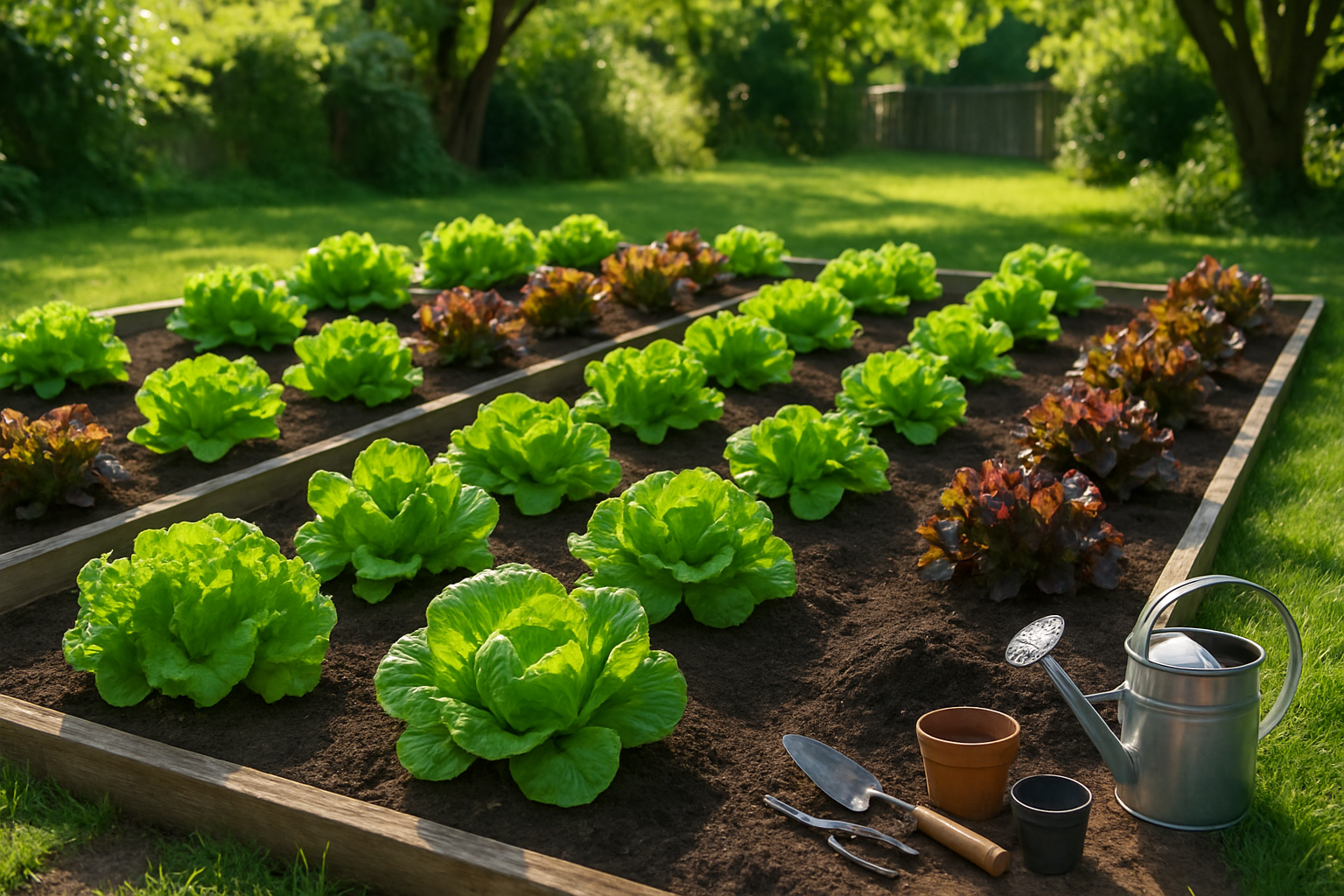Introduction
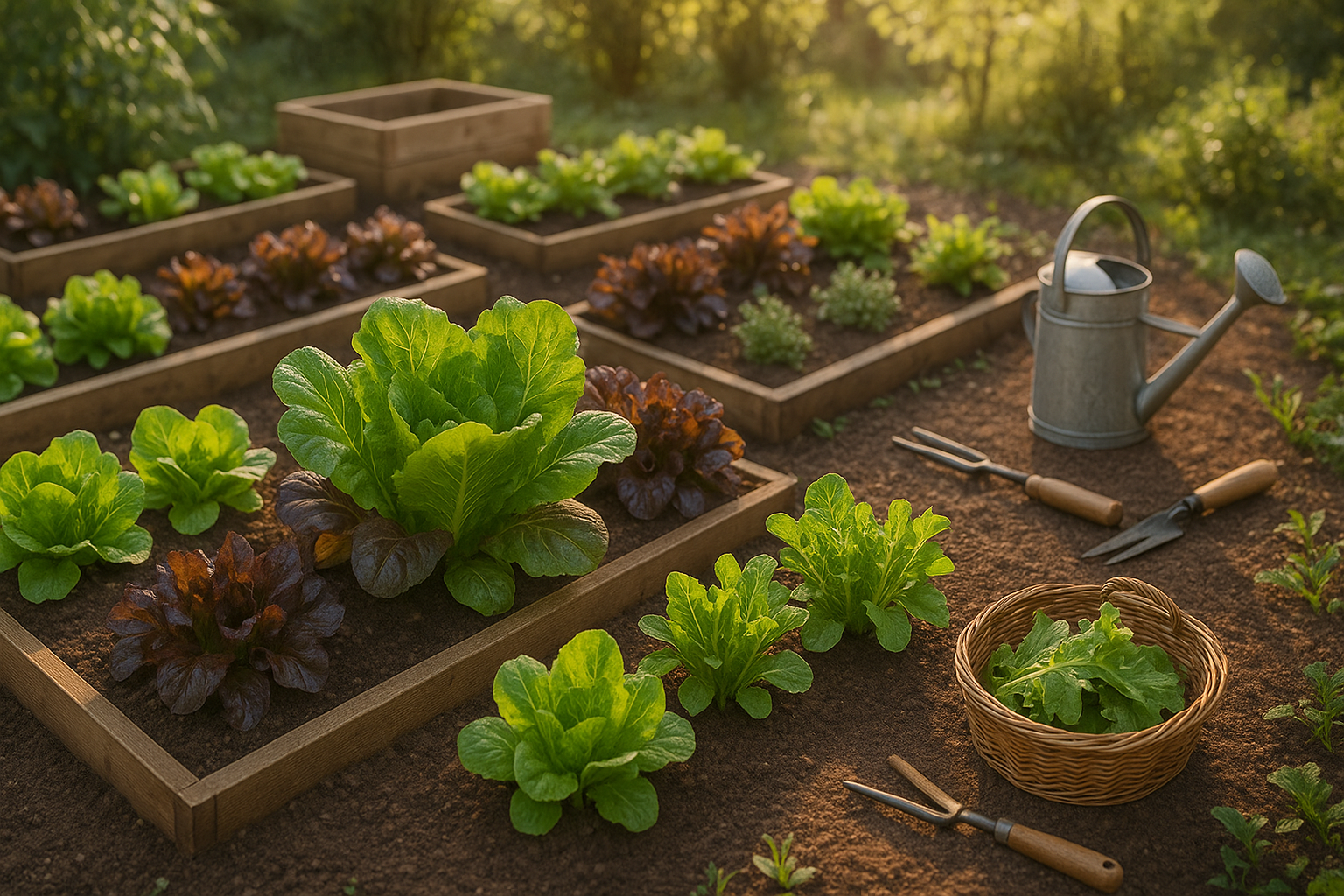
Getting lettuce spacing right is one of the simplest ways to boost your harvest—whether you’re growing a few heads in a backyard plot or managing tidy rows across a bustling farm. Proper lettuce spacing helps plants access the light, water, and nutrients they need to thrive, reducing competition and lowering the risk of pests and disease.
In home gardens, leaving a bit of extra space—usually around 6 to 10 inches between each plant—makes it easier to weed, water, and pick leaves without accidentally damaging fragile stems. On the farm, the focus shifts to maximizing yield per square foot while still allowing enough room for airflow and quick harvesting. This often involves tighter beds and more efficient mechanical planting tools.
Whichever setting you’re in, choosing the right spacing can mean the difference between stunted, crowded plants and a lush, healthy lettuce patch. Even simple tweaks, like aligning your rows for easy access or staggering your planting holes, can make routine care much more manageable. So, whether you’re after a single salad or baskets full for market, understanding the ins and outs of lettuce spacing is the first step to crisp, delicious greens all season long.
Understanding Lettuce Growth Habits and Varieties
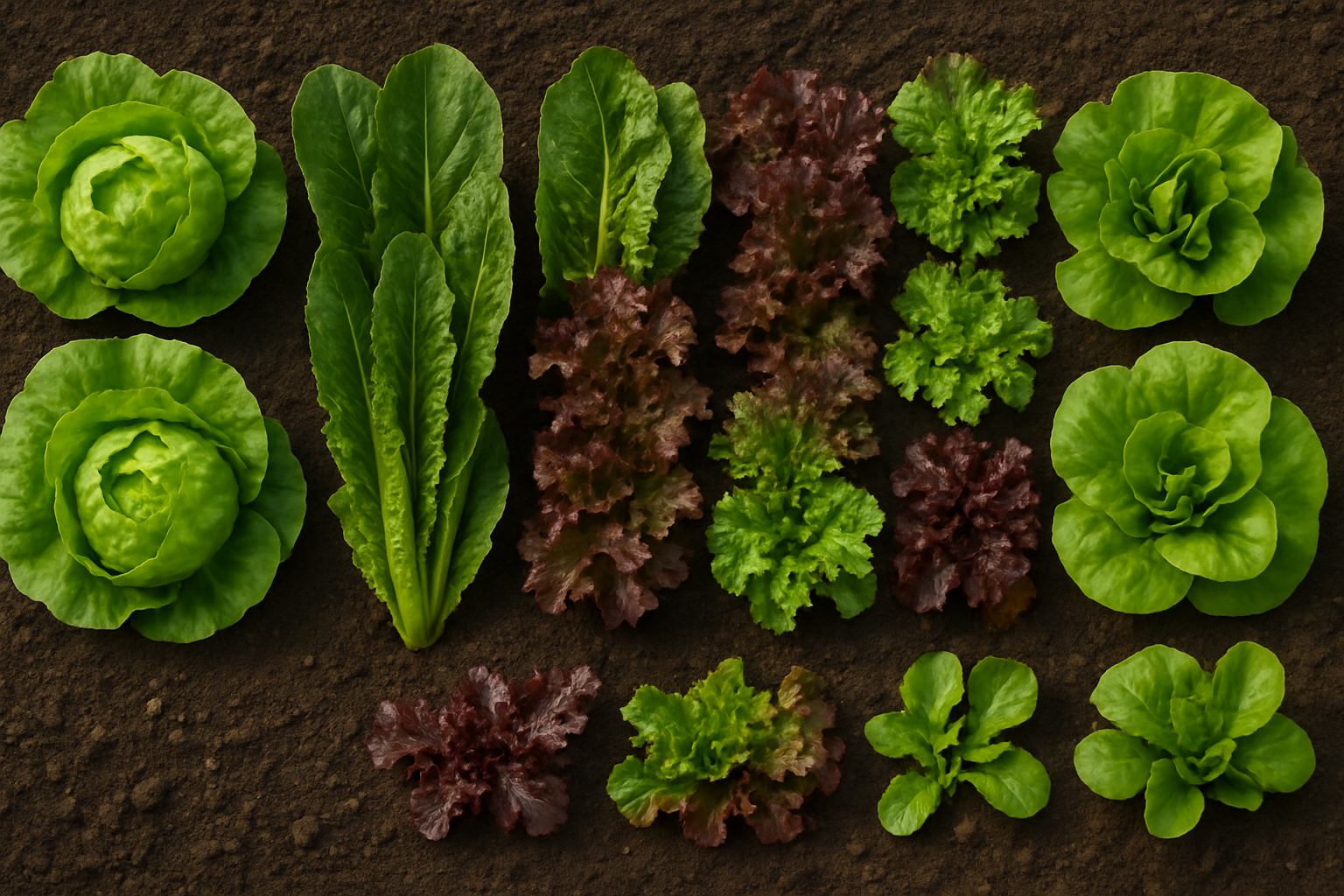
Lettuce comes in several main types, each with unique growth habits that influence how you plant and care for them.
Head lettuces, like crisphead (think iceberg), form tight, dense balls and require more space—about 12 to 18 inches apart—since the heads need room to develop without crowding.
Romaine lettuces grow upright, forming tall, elongated heads, and generally do well with about 10 to 12 inches between plants.
Leaf lettuces, such as red leaf and green leaf varieties, don’t form heads; instead, they grow as loose clusters of leaves, making them ideal for denser planting—space these about 6 to 8 inches apart if you’re harvesting outer leaves frequently.
Butterhead lettuces, including Bibb and Boston, create loose, tender heads similar in appearance to small cabbages and thrive with 8 to 10 inches between plants.
The form of each variety determines not just spacing but also air flow, light penetration, and ease of harvest. For example, tighter head varieties can be more prone to rot if crowded, whereas leaf types tolerate closer spacing since you can “cut and come again.”
Always check seed packets for any variety-specific recommendations, as some compact or heat-tolerant types may thrive even closer together.
Giving each lettuce plant the right amount of space ensures healthy growth, fewer disease issues, and a bigger, better harvest throughout the season.
Preparing the Soil and Beds for Optimal Spacing
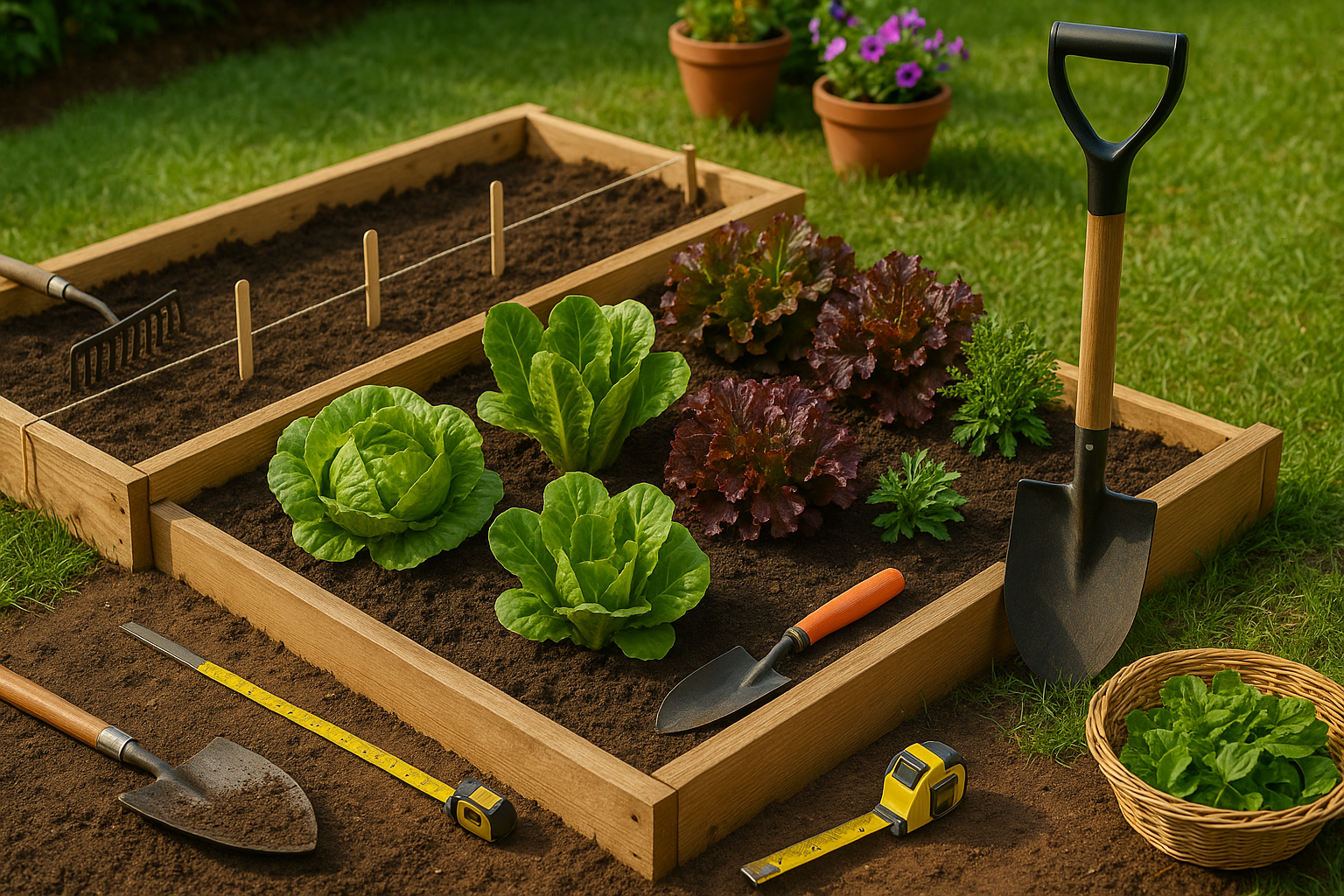
Healthy lettuce starts with well-prepared soil and thoughtfully laid-out beds. Before planting, enrich your soil by mixing in compost or well-rotted manure—aim for a crumbly, fertile texture, as lettuce thrives in loose, well-draining earth. If your soil is clay-heavy, lighten it with sand or organic matter to prevent waterlogging.
Raised beds offer superb drainage and make it easy to control soil quality; simply fill them with a mix of topsoil and organic amendments. For small spaces or patios, containers can work well too—just be sure they are at least 6-8 inches deep and filled with high-quality potting mix.
When laying out your beds or rows, keep healthy plant spacing in mind: most lettuces need 10 to 12 inches between each head to avoid crowding and ensure good airflow. Use a tape measure or a wooden ruler as a guide, and mark planting spots with thin sticks, garden markers, or even popsicle sticks for an easy visual reference.
For traditional garden beds, stretch a string line between stakes to keep rows straight, or use a long plank of wood as a guide. If you’re short on space, stagger your lettuce in a zigzag, or “offset” pattern, which optimizes airflow and sun exposure. By prepping soil with care and measuring out beds with precision, you set your lettuce up for robust growth and a more bountiful harvest.
Ideal Spacing Guidelines for Home Gardens
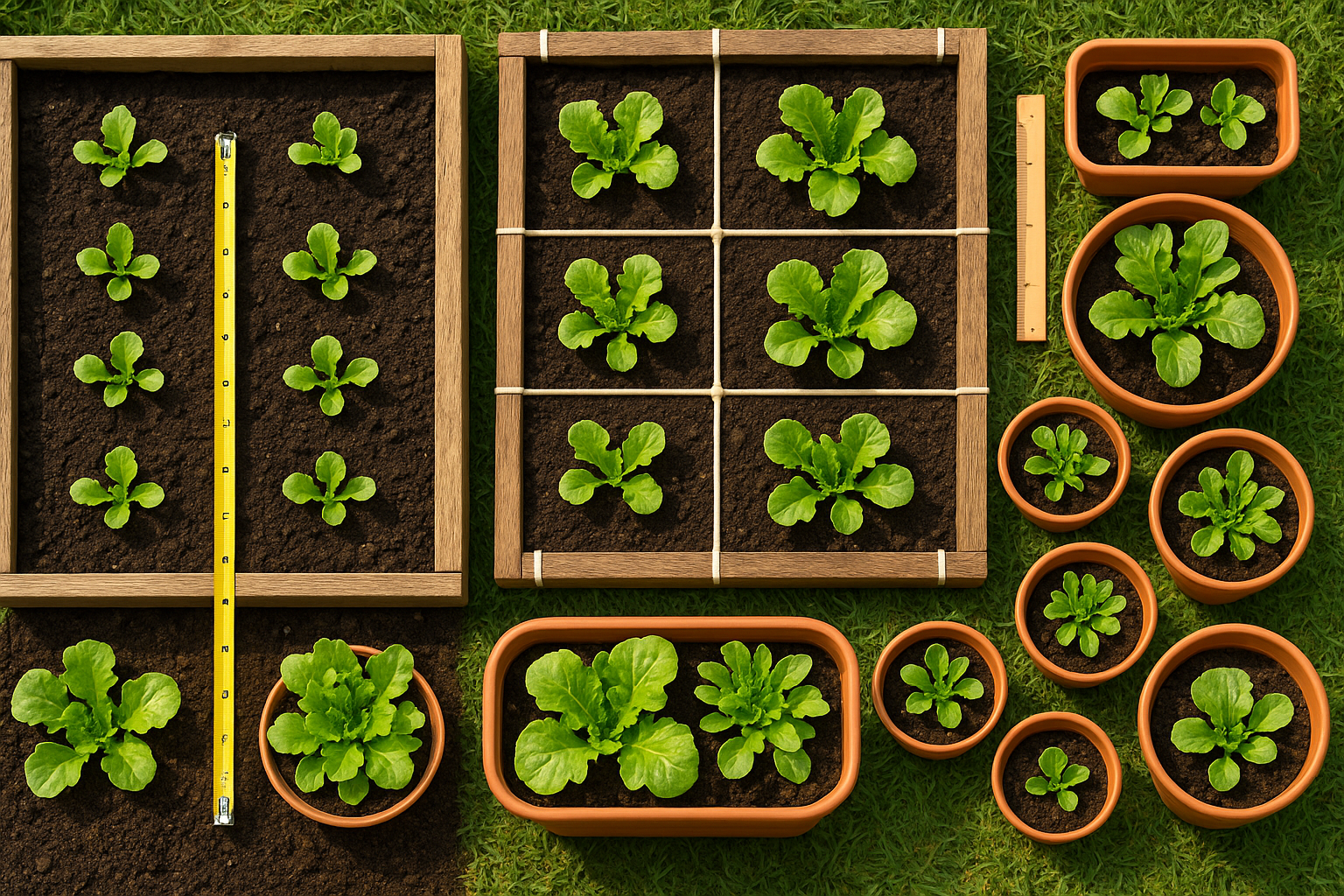
When planning your home garden, giving your lettuce the right amount of space is key to healthier plants and bigger harvests. For heading lettuces like iceberg or romaine, aim for 10 to 12 inches between plants, while smaller leaf varieties such as butterhead or loose-leaf types can be spaced closer—about 6 to 8 inches apart.
If you’re sowing seeds directly in your garden, scatter them sparingly in shallow rows (just 1/4 inch deep), knowing you’ll need to thin them later. For transplants, simply plant them straight at the final spacing, which saves a step and minimizes plant shock. Thinning is essential when growing from seed; once seedlings sprout and reach about two inches tall, gently pull or snip out extras so the remaining plants have the recommended room—don’t be afraid to eat those thinned seedlings in a salad!
Organizing Your Lettuce
You can organize your lettuce several ways, depending on your space. In traditional row gardens, leave about 12 inches between each row so you can easily walk and weed. If you like a neater look or only have a small space, try square-foot gardening: plant four leaf lettuce or two head lettuce plants per square foot.
For those growing in containers, pick a wide, shallow pot and space leaf lettuces at 4 to 6 inches apart around the edge; for heads, stick to one plant per 8-10 inch pot.
Grouping similar lettuce types together, whether in rows, squares, or containers, helps simplify care and ensures each plant gets enough air and sunlight.
By following these spacing guidelines—thinning regularly and choosing the right layout for your garden style—you’ll set your lettuce up for lush, tasty growth all season long.
Lettuce Spacing for Farm Production and Larger Plots
When it comes to large-scale lettuce production, spacing is more than just keeping plants neat—it’s about maximizing yields, reducing disease, and streamlining operations. On commercial farms, lettuce is often planted in rows spaced 12–18 inches apart, allowing just enough room for equipment like seeders and cultivators to pass through without damaging tender plants. Within rows, plants are typically about 8–12 inches apart.
Closer spacing can boost yields, which is tempting, but it’s a trade-off: densely packed lettuce can restrict airflow, creating humid microclimates that encourage fungal diseases, especially in wet or humid regions. Conversely, wider row spacing fosters better air circulation, helping to keep leaves dry and healthy, and makes it easier to get machinery in for weeding and harvesting.
However, wider gaps may leave soil exposed, encouraging weed growth, so cover crops or mulch can help. Adapt your spacing based on local climate—a cool, breezy location may tolerate tighter rows, while hot, still summers call for more room to breathe. Soil type matters too; loose, fertile soils promote quicker growth and may support slightly tighter spacing, while heavy clay is best managed with wider rows to minimize disease risk.
Lettuce variety also counts: petite butterheads can handle close quarters, but larger romaines or crispheads need more space.
For efficient large-area planting, many growers direct-seed in precision-drilled rows and then thin seedlings early, slicing out extras with a sharp hoe or knife for speed. Others may rely on transplants grown offsite and set into precise grid patterns for uniformity and access.
Whichever method you choose, keeping pathways consistent and spacing deliberate ensures stronger, healthier lettuce stands and smoother field operations, saving both labor and inputs in the long run.
Common Spacing Mistakes & Troubleshooting
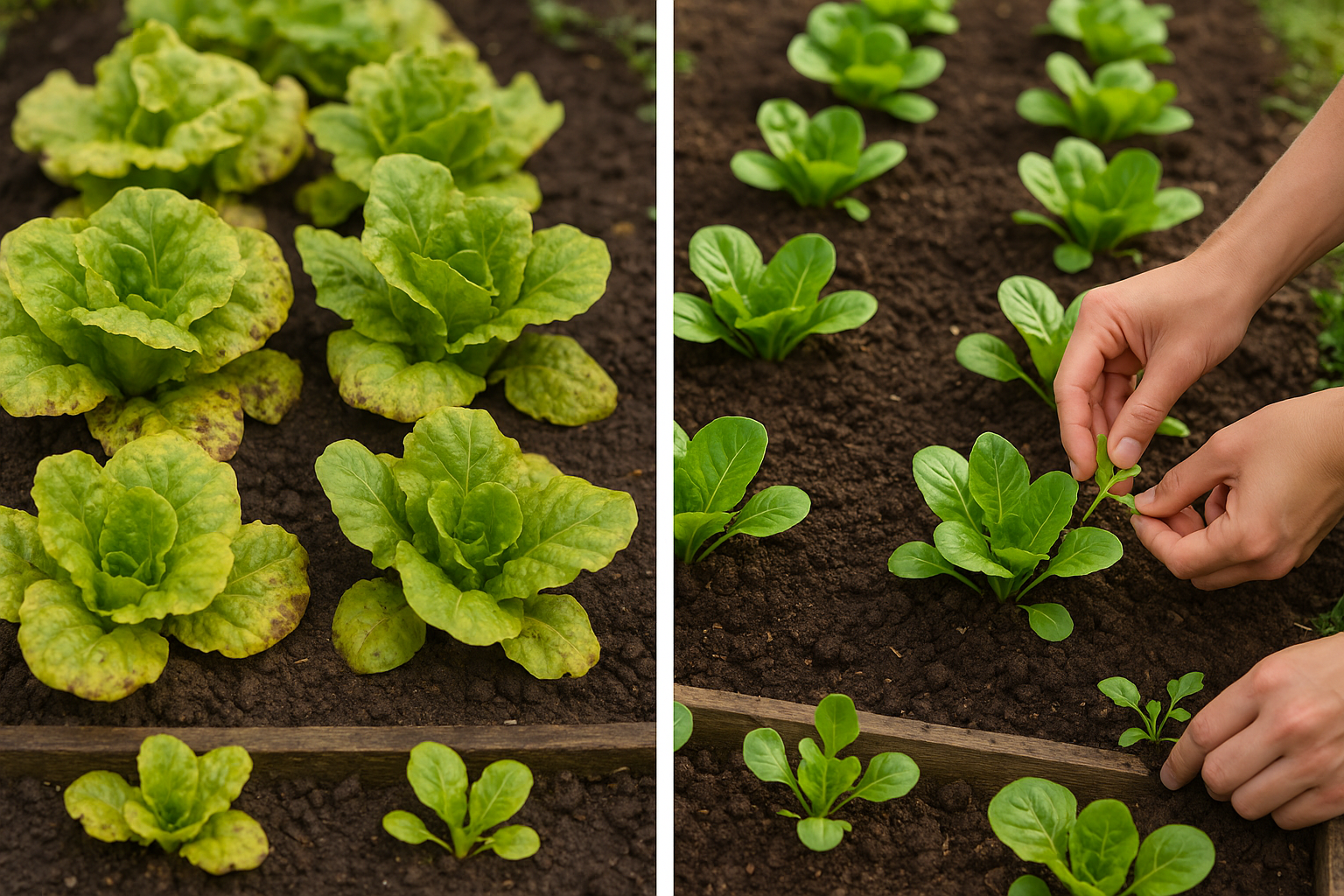
A surprisingly common mistake in vegetable gardening is overcrowding plants, which can cause several problems like poor air circulation, increased pest infestations, and the rapid spread of mold or fungal diseases. When plants are too close together, they compete for sunlight, nutrients, and water. This stress can lead to issues like bolting (when plants like lettuce go to seed prematurely) and result in undersized heads or yields, especially with crops such as cabbage, broccoli, or lettuce.
Signs of overcrowding often include yellowing lower leaves, stunted growth, or a noticeable buildup of moisture and mildew in dense patches. To troubleshoot, regularly walk through your garden and look for bunching or plants fighting for space—thin seedlings early if they’re too close, and don’t hesitate to remove weaker plants to prevent future issues.
Intercropping can help you make better use of your garden without crowding: for example, alternate quick-growing radishes between rows of slower-growing carrots. Likewise, succession planting—replacing harvested crops with new ones throughout the season—keeps your beds productive without cramming everything in at once.
Focus on the spacing recommendations for each variety and use markers or string lines at planting time to guide even rows. With a little planning, you’ll reduce pest and mold problems and enjoy a bigger, healthier harvest.
Harvesting, Aftercare, and Successive Planting
Properly spacing your lettuce plants from the start is key to easier and more effective harvesting. Not only does spacing prevent overcrowding—which can lead to disease and uneven growth—but it also provides enough room to snip or pull mature leaves or heads without damaging neighboring plants.
When it’s time to harvest, use clean, sharp scissors or garden shears to avoid tearing or bruising the leaves. For loose-leaf varieties, harvest the outer leaves first, allowing the plant’s center to continue producing for weeks. Head-forming types should be harvested just as the heads firm up, before any signs of bolting or bitterness.
To maximize your harvests, practice successive planting by sowing new seeds every two to three weeks, filling in gaps as space opens up. Rotating your lettuce with other fast-growing greens or herbs can also keep your space productive and help reduce disease pressure.
After each harvest, remove any leftover roots, gently loosen the top layer of soil, and add a light layer of compost to replenish nutrients. Avoid over-fertilizing—too much nitrogen can lead to lush, soft growth that’s more prone to pests. Mulching between plantings keeps the soil moist and cool, promoting quick germination and healthy seedlings.
Quick tip: Growing a legume crop like peas after lettuce can help recharge nitrogen levels in the soil, making for even better future harvests. With a little planning and attention, your lettuce patch can keep producing crisp, flavorful greens all season long.
